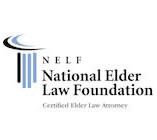People with special needs often require housing that accommodates their lifestyle. In many cases, group living facilities are called for, with the group environment providing stability and support. But in other cases, a person with special needs needs a very specific type of housing, designed particularly for her. Or, it may simply make sense for a person with special needs to have a place of her own. The rental market is clearly not equipped to provide the specific accommodations many individuals with special needs require. Fortunately, there are many ways to provide private housing for a person with special needs without compromising the majority of her means-based government benefits.
The first step when thinking about purchasing a home for a person with special needs is to decide whether the home should be held in trust or given to the resident to own in her own name. Since many people with special needs are perfectly capable of managing their own property, both Supplemental Security Income (SSI) and Medicaid regulations permit beneficiaries to own their own home without it counting as an asset for purposes of qualifying for or maintaining benefits (although there may be specific limits on the value of the home a beneficiary owns, which vary by state). Home ownership also allows increased access to credit, binds a person with special needs with their community, and provides a deep sense of self-worth.
But home ownership comes with many responsibilities, and frequently families choose to place a home into a special needs trust (SNT) instead of giving it to a person with special needs. Putting the home in a trust protects the home from a trust beneficiary’s creditors, who may be able to go after the equity in the home if it were owned by the beneficiary outright. Placing the home in trust also allows for flexibility if the home needs to be sold quickly, since the proceeds are retained by the trust. If a homeowner with special needs sells his own home, he would have to quickly purchase a new one for the same price or transfer the proceeds into a different kind of special needs trust (called a “first-party trust,” with a government payback provision) in order to maintain access to government benefits. Finally, some people with special needs, especially those suffering from mental illnesses that make it hard for them manage property or make them especially likely to be taken advantage of, should simply not own property in their own name.
Once the decision is made about who owns the home, the next step is determining how the home should be purchased. This decision depends on the finances of those buying the home and the government benefits being received by the resident. When a home is purchased outright (either by a trust or by a beneficiary’s family, who then gives the home to the resident), SSI rules dictate that the purchase counts as in-kind support and maintenance for the month of purchase only. Under the complicated restrictions, this means that an SSI beneficiary could lose up to about $244 (in 2013) of her benefit for one month. If the beneficiary’s monthly SSI award is reduced to zero by this reduction, she could lose her benefits, and accompanying health care, for the month of the gift. She could then regain eligibility at the conclusion of the month.
On the other hand, if the home is purchased through some combination of a down payment and a mortgage being paid by the trust or by family members, then the resident’s SSI award will be reduced by approximately $244 during each month that someone other than the beneficiary pays the mortgage. However, it does not matter if the mortgage payment is very large — the beneficiary still loses approximately $244 monthly. While this amount usually pales in comparison to the benefits of living in a home of one’s own, should a beneficiary receive an SSI award that is less than $244 a month before the purchase of the home, he will lose his SSI benefit because his award is reduced to zero by the in-kind mortgage payment. Because the mortgage payments will presumably be ongoing, this loss of SSI and health care benefits could be permanent, unlike the one-time loss of benefits if the home is purchased outright. Since other sources of income can also affect an SSI award, it is extremely important that families work with a qualified special needs planner to make sure that they are not going to compromise important benefits by purchasing the home.
After the home is purchased, maintenance becomes key. Under SSI regulations, payment of many household expenses for a beneficiary counts against her SSI benefit. This applies even if a trust owns the home the beneficiary is living in. For example, if the trust pays for the home’s water or electric bill, the SSA will deduct the same (up to?) $244 from a beneficiary’s award. So if a trust owns the home outright and manages to avoid paying a mortgage, the beneficiary can still incur a penalty should the trust pay for the upkeep of the home, and the same concerns regarding benefits apply. There is one important exception to these restrictions – a trust can pay for home improvements without penalty because these are not typical household expenses expected to be provided by a beneficiary.
The rules governing home ownership may seem complex, but the rewards are many and well worth exploring with a qualified special needs planner.




